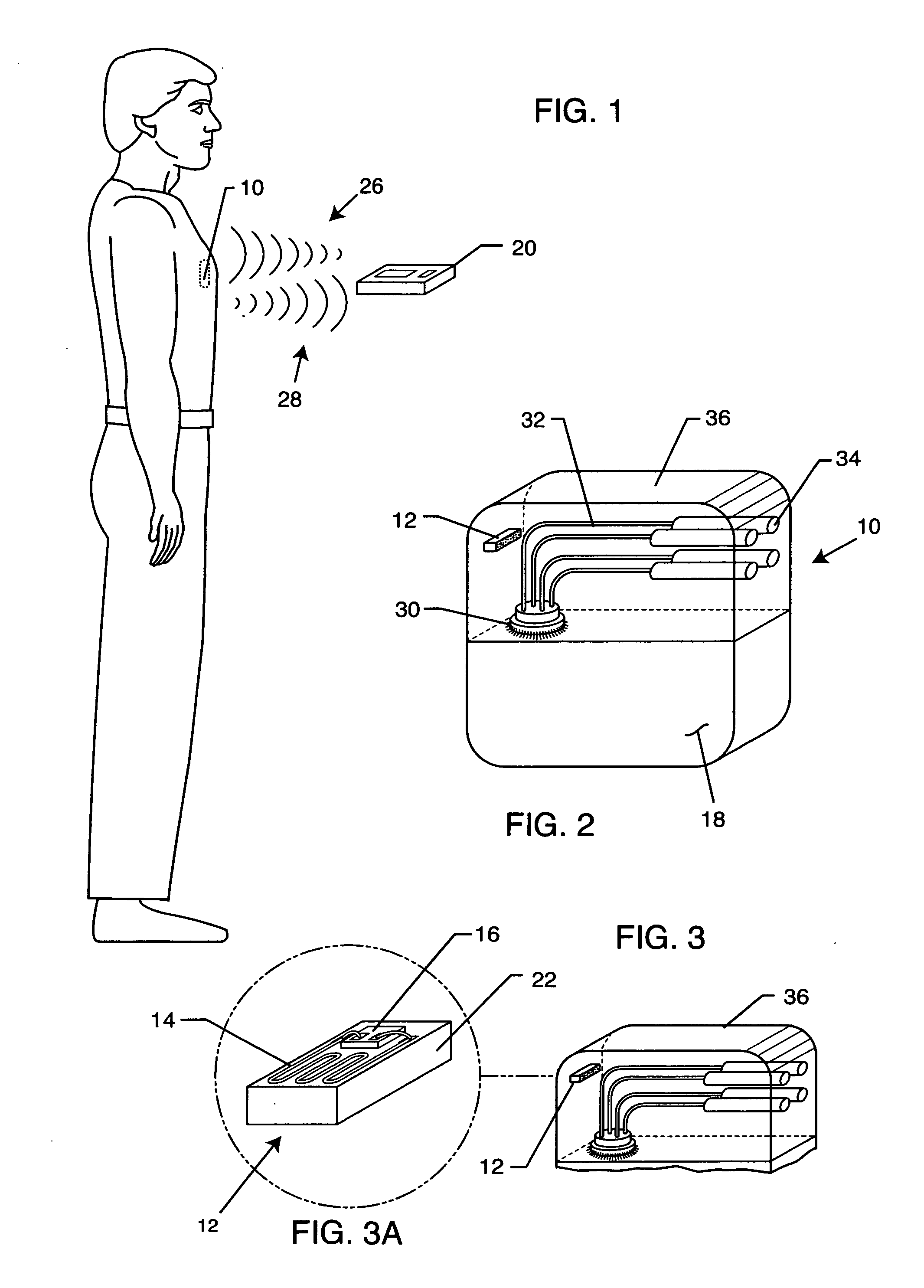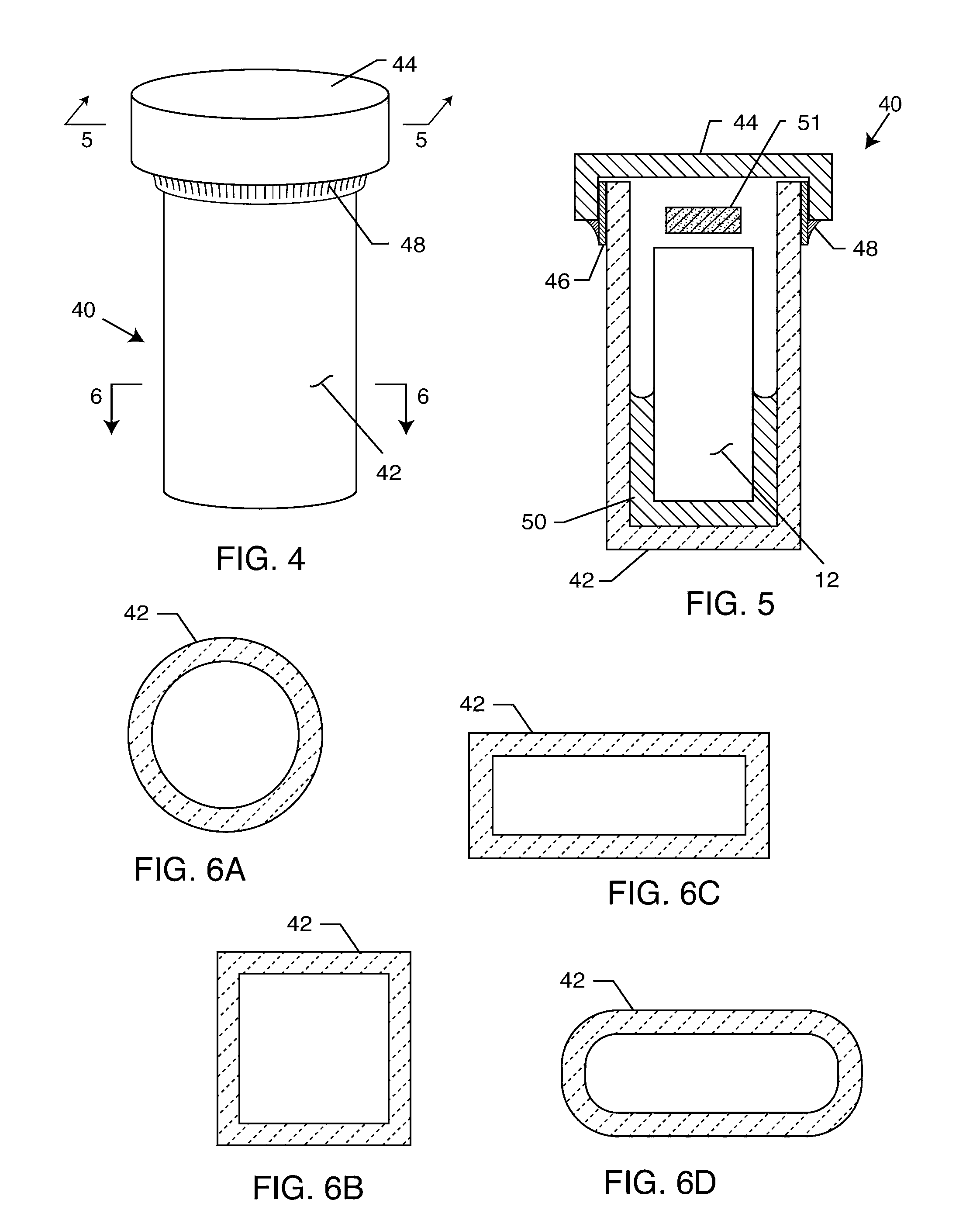RFID detection and identification system for implantable medical devices
a technology of radio frequency identification and identification system, which is applied in the field of methods of identifying implanted medical devices, can solve the problems of limited information so provided, difficult identification, and inability to reliably identify the source of information
- Summary
- Abstract
- Description
- Claims
- Application Information
AI Technical Summary
Problems solved by technology
Method used
Image
Examples
Embodiment Construction
[0052] The present invention is directed to a radio frequency identification (RFID) system for use with active implantable medical devices (AIMDs) and an associated RFID tag. Specifically, the RFID system comprises an RFID tag implanted in a patient's body and associated with an implanted AIMD, and an interrogator in communication with the RFID tag.
[0053]FIG. 1 is an outline drawing of an adult male pacemaker patient with an AIMD 10. FIG. 2 is an isometric view of an AIMD or pacemaker 10 that has been fitted with an RFID tag 12 of the present invention. In a preferred embodiment, as shown in FIG. 3, the RFID tag 12 comprises a substrate 22, an antenna or coil 14 and an RFID chip 16. These components of the RFID tag 12 are well known in the art. RFID standards are evolving worldwide at various frequencies. For example, a 915 MHz protocol is generally evolving to be used for retail goods and inventory control. However, due to the high frequency, the 915 MHz protocols are not very use...
PUM
 Login to View More
Login to View More Abstract
Description
Claims
Application Information
 Login to View More
Login to View More - R&D
- Intellectual Property
- Life Sciences
- Materials
- Tech Scout
- Unparalleled Data Quality
- Higher Quality Content
- 60% Fewer Hallucinations
Browse by: Latest US Patents, China's latest patents, Technical Efficacy Thesaurus, Application Domain, Technology Topic, Popular Technical Reports.
© 2025 PatSnap. All rights reserved.Legal|Privacy policy|Modern Slavery Act Transparency Statement|Sitemap|About US| Contact US: help@patsnap.com



